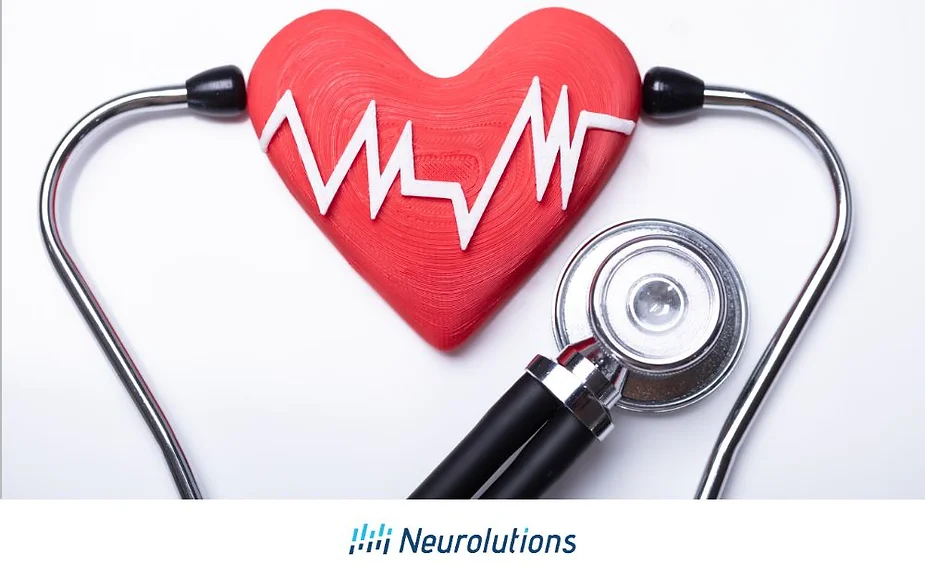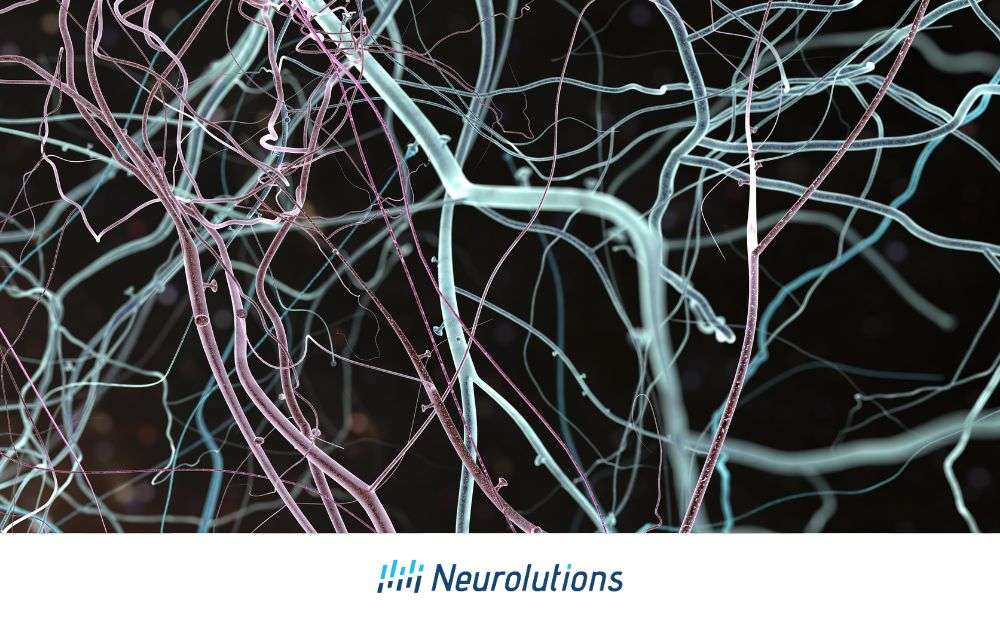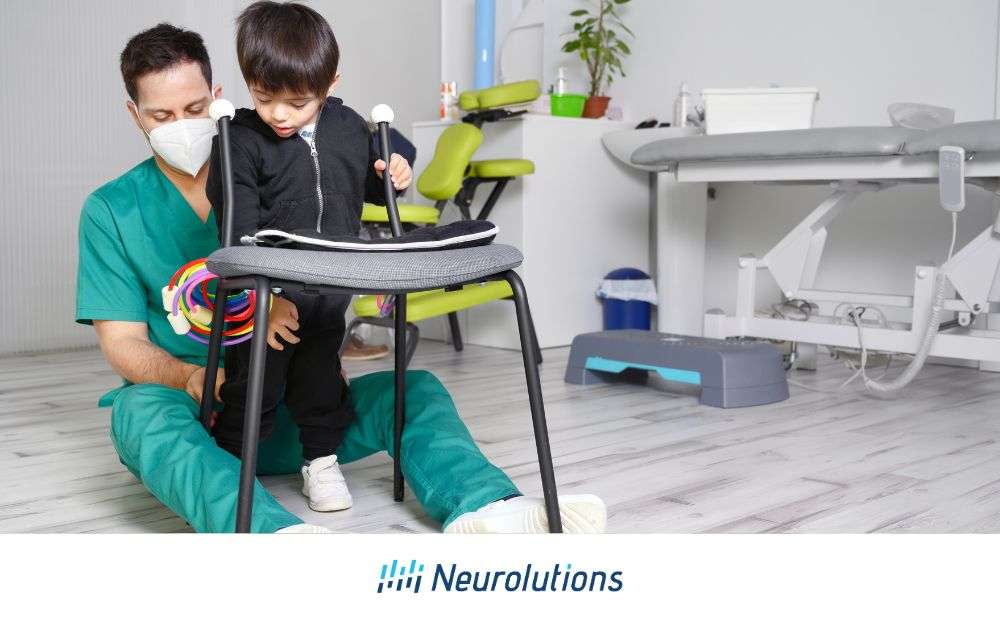If you have been recently diagnosed with atrial fibrillation (AFib or AF) or have been managing it for years, you may have questions or concerns about the risk of stroke and bleeding.
While your personal medical information should be closely reviewed and discussed at length by your physician, this guide may help you understand signs and symptoms, key recommendations, and prevention of AFib-related strokes.
What is Atrial Fibrillation (AFib/AF)?
Atrial fibrillation (also called AFib) is a type of cardiac arrhythmia in which the heart’s electrical signals are disorganized and rapid, causing the atria to quiver instead of contracting effectively. As a result, the heart’s pumping action becomes irregular and inefficient.
Atrial fibrillation is one of the most common types of cardiac arrhythmias, and it becomes more prevalent with age. According to the American Heart Association, around 2.7 million people in the United States have atrial fibrillation, and this number is expected to rise as the population ages. While both men and women can develop AFib, some studies suggest that women may be more likely to experience it than men, particularly after the age of 75. However, the reasons for this gender difference are not fully understood, and further research is needed to explore the underlying mechanisms. Other risk factors for AFib include high blood pressure, diabetes, obesity, a history of heart disease or stroke, and certain lifestyle factors such as smoking and excessive alcohol consumption. (1, 2)
How Permanent is Atrial Fibrillation?
Atrial fibrillation can be either temporary or permanent, depending on the underlying cause and the effectiveness of treatment. Some people may experience occasional episodes of AFib, which come and go on their own and do not require long-term treatment. This type of AFib is called paroxysmal atrial fibrillation. Other people may have persistent AFib, which lasts for longer periods of time and requires medical intervention to restore a normal heart rhythm. In some cases, AFib can become permanent, meaning that the heart remains in an irregular rhythm despite attempts to restore a normal rhythm with medications or procedures.
How Does Atrial Fibrillation Relate to Stroke?
AFib can cause blood to pool in the atria, leading to the formation of blood clots. These clots can then travel to the brain and cause a stroke. In fact, AFib is responsible for up to one-third of all strokes in people over the age of 65. The likelihood of stroke is further increased in individuals with additional risk factors such as high blood pressure, diabetes, and previous history of stroke or transient ischemic attack (TIA). That is why it is so important for individuals with AFib to receive appropriate treatment to reduce their risk of stroke. (3)
When the atria fibrillates, blood may pool in the chambers instead of being pumped efficiently into the ventricles and out to the body. This stagnant blood can form clots, which may break free and travel through the bloodstream to other parts of the body, including the brain. If a clot blocks a blood vessel in the brain, it can cause an ischemic stroke, which is the most common type of stroke.
Up to 90% of ischemic strokes are caused by blood clots, and people with atrial fibrillation are at increased risk of developing these clots due to the abnormal heart rhythm. (5)
Strokes that occur in people with atrial fibrillation are often more severe compared to strokes caused by other conditions or underlying mechanisms. This is because the clots that form in the atria due to the irregular heartbeat of AFib tend to be larger and more likely to cause blockages in major blood vessels in the brain. As a result, AFib-related strokes can cause more extensive damage to the brain, leading to more severe and long-lasting effects such as paralysis, speech difficulties, or cognitive impairment.
In addition, people with AFib who experience a stroke may be more likely to have multiple strokes over time, further increasing the risk of disability and complications. This is why it is so important for people with AFib to work closely with their healthcare providers to manage their condition and reduce their risk of stroke, such as including the use of blood-thinning medications and other preventive measures.
Are There Any Other Conditions Associated With AFib that Increase the Risk of Stroke?
There are several other conditions associated with AFib that can increase the risk of stroke. These conditions are known as “stroke risk factors.” Here are some of the most common ones:
- Age: The risk of stroke increases with age, and AFib is more common in older adults.
- High blood pressure: High blood pressure is a significant risk factor for stroke and is common in people with AFib.
- Diabetes: Diabetes is a condition that affects blood sugar levels and can increase the risk of stroke in people with AFib.
- Previous stroke or transient ischemic attack (TIA): If you have previously had a stroke or TIA, you are at increased risk of having another stroke if you have AFib.
- Heart disease: Several heart conditions, including coronary artery disease, heart failure, and valve disease, can increase the risk of AFib and stroke.
- Peripheral artery disease (PAD): PAD is a condition in which the arteries in the legs become narrowed or blocked, which can increase the risk of stroke in people with AFib.
- Sleep apnea: Sleep apnea is a condition in which breathing is interrupted during sleep. It is more common in people with AFib and can increase the risk of stroke.
- Obesity: Obesity is a significant risk factor for cardiovascular disease, including AFib and stroke.
- Smoking: Smoking is a significant risk factor for cardiovascular disease, including AFib and stroke.
Symptoms of AFib
When symptomatic, signs of atrial fibrillation may include:
- Heart palpitations (rapid, pounding, fluttering sensations)
- Fatigue, malaise, low energy
- Shortness of breath
- Chest pain
- Dizzy or lightheadedness
It is essential to recognize these symptoms and seek medical attention promptly. As mentioned, if you experience any of these symptoms, it is vital to talk to your doctor right away to determine if further testing is needed.
It is also important to be aware of silent atrial fibrillation; while it may not have any noticeable symptoms, it still increases the risk of stroke, making it critical to identify and manage this condition early on and highlights the importance of regular health checkups. This is especially true for individuals who may be at higher risk of developing AFib, such as those with a history of heart disease or stroke, high blood pressure, or diabetes.
What Triggers AFib?
There are several triggers that can exacerbate AFib and increase the likelihood of experiencing an episode. Here are some of the most common triggers:
- Stress: Stressful situations, such as work-related stress or family issues, can trigger AFib episodes.
- Lack of sleep or fatigue: Both chronic and episodic lack of sleep or fatigue can trigger AFib episodes.
- Stimulants: Stimulants, such as caffeine found in coffee or energy drinks, or street drugs that contain amphetamines, can trigger AFib episodes.
- Smoking: Smoking is a known trigger for AFib episodes and can also increase the risk of developing AFib.
- Alcohol abuse and binge drinking: Alcohol is a known trigger for AFib episodes and can also increase the risk of developing AFib.
It is important to be aware of these triggers and to take steps to avoid them when possible. Your doctor may also recommend lifestyle changes or medications to help reduce the frequency and severity of AFib episodes.
How is AFib Diagnosed?
A physician is required for the diagnosis of atrial fibrillation (AFib). The diagnosis is typically made through a combination of a physical examination, a review of your medical history, and diagnostic tests. Here are some of the most common diagnostic tests used to diagnose AFib:
- Pulse check: Your doctor will check your pulse to determine if your heart rate is irregular or if you are in AFib.
- Stethoscope exam: Your doctor will listen to your heart using a stethoscope to check for any irregularities in your heartbeat.
- Electrocardiogram (ECG or EKG): An ECG is a non-invasive test that uses electrodes placed on the skin to monitor the electrical activity of your heart and detect any abnormalities in heart rhythm. This is the most commonly used test to diagnose AFib.
- Holter monitor: A Holter monitor is a portable ECG device that records your heart’s electrical activity for a period of time, typically 24 to 48 hours, to detect any episodes of AFib that may not be captured during a regular ECG.
- Event monitor: An event monitor is a portable ECG device that records your heart’s electrical activity only when you experience symptoms of AFib. You wear the monitor for several weeks to capture any episodes of AFib.
- Echocardiogram: An echocardiogram is a non-invasive test that uses sound waves to create images of your heart and detect any structural abnormalities or other conditions that may be causing your AFib.
Once a diagnosis of AFib is confirmed, your doctor will work with you to develop a treatment plan that may include medications, lifestyle changes, and procedures to help control your symptoms and reduce your risk of complications.
Management of AFib-Related Stroke Through Lifestyle Changes & Medical Treatment
Did you know? 80% of strokes are considered preventable.
The prevention of AFib and AFib-related strokes is the ultimate goal of treatment. While some risk factors for AFib and stroke may be non-modifiable, there are many steps that can be taken to reduce the risk of these conditions and manage their symptoms.
The treatment and management of atrial fibrillation can involve a combination of approaches, including medications, monitoring, lifestyle changes, and medical procedures. The specific treatment approach will depend on the individual’s medical history, the severity and frequency of symptoms, and other factors such as age and overall health.
Medication
There are several medications used to treat and manage AFib, and the choice of medication depends on the individual patient’s condition and medical history.
Beta-blockers, calcium channel blockers, and potassium channel blockers are commonly used to control heart rate and rhythm in patients with AFib. Antiarrhythmic medications may also be used to restore and maintain normal heart rhythm. Blood thinners, also known as anticoagulants, may be prescribed as well to reduce the risk of blood clots and stroke.
It is essential to work closely with your doctor and follow their instructions when taking medications for AFib. Your doctor will also monitor you closely and adjust your medication regimen as needed to ensure the best possible outcome. It is important to be aware of potential side effects and report any concerns to your doctor immediately.
Lifestyle changes
When you have AFib, there are several lifestyle changes you can make to help manage the condition and reduce the risk of complications. Here are some recommendations:
- Maintain a healthy weight: Being overweight or obese can increase the risk of developing AFib. Losing weight through a healthy diet and exercise can help reduce the risk of AFib and its associated complications.
- Eat a heart-healthy diet: Eating a diet rich in fruits, vegetables, whole grains, lean protein, and healthy fats can help lower blood pressure and cholesterol levels, which are risk factors for AFib.
- Exercise regularly: Regular exercise can help improve cardiovascular health and lower the risk of developing AFib. However, it is important to consult with your doctor before starting an exercise program.
- Avoid alcohol and caffeine: Both alcohol and caffeine can trigger AFib episodes in some people. Limiting or avoiding these substances can help reduce the risk of AFib.
- Manage stress: Stress and anxiety can trigger AFib episodes in some people. Finding healthy ways to manage stress, such as meditation, yoga, or breathing exercises, can help reduce the risk of AFib.
- Quit smoking: Smoking is a major risk factor for cardiovascular disease, including AFib. Quitting smoking can help reduce the risk of developing AFib and other complications.
- Monitor and manage other health conditions: High blood pressure, diabetes, and other health conditions can increase the risk of AFib and its complications. Managing these conditions through lifestyle changes and medications as prescribed by your doctor can help reduce the risk of AFib.
It is important to work closely with your doctor to develop a plan that is tailored to your individual needs and medical history. By making lifestyle changes and following your doctor’s recommendations, you can help manage AFib and reduce the risk of complications.
Medical Treatment
There are several medical procedures used to treat atrial fibrillation (AFib). Here are some of the most common ones:
Cardioversion:
Cardioversion is a procedure in which an electric shock is delivered to the heart to restore normal sinus rhythm. This can be done using medication or a device called a defibrillator.
Catheter ablation:
Catheter ablation is a minimally invasive procedure in which a thin, flexible tube called a catheter is inserted through a vein and guided to the heart. The catheter delivers heat or cold energy to create small scars in the heart tissue that block abnormal electrical signals and restore normal heart rhythm.
Cox Maze procedure:
The Cox Maze procedure is an open-heart surgical procedure in which a maze-like pattern of scar tissue is created in the atria to block abnormal electrical signals and restore normal heart rhythm.
Implantable devices:
Implantable devices, such as pacemakers or implantable cardioverter defibrillators (ICDs), can help regulate the heart’s rhythm and prevent AFib episodes.
It is important to work closely with your doctor to determine the most appropriate treatment for your individual condition. Your doctor may recommend one or more of these procedures based on the severity and duration of your AFib, as well as your overall health and medical history. It is also important to understand the potential risks and benefits of each procedure and to discuss any questions or concerns with your doctor.
Monitoring AFib and Response to Treatment
Monitoring is very important for AFib. As mentioned earlier, AFib can be asymptomatic (meaning without symptoms), so it can go undetected if not actively monitored. Even if someone has symptoms of AFib, such as palpitations, monitoring can help to determine the frequency and duration of the episodes, as well as provide insight into any triggers or patterns. This information can guide treatment decisions and help to prevent complications such as stroke. There are several monitoring methods available, ranging from traditional electrocardiogram (ECG) to newer technologies like mobile cardiac telemetry and implantable cardiac monitors.
Summary
Working closely with a healthcare provider to develop a personalized treatment plan that addresses individual risk factors and preferences is an important part of preventing AFib and stroke. With proper management and care, many people with AFib are able to live healthy and active lives.
Resources
- O’Keefe EL, Sturgess JE, O’Keefe JH, Gupta S, Lavie CJ. Prevention and Treatment of Atrial Fibrillation via Risk Factor Modification. Am J Cardiol. 2021 Dec 1;160:46-52. doi: 10.1016/j.amjcard.2021.08.042. Epub 2021 Sep 25. PMID: 34583808.
- Feinberg WM, Blackshear JL, Laupacis A, Kronmal R, Hart RG. Prevalence, age distribution, and gender of patients with atrial fibrillation. Analysis and implications. Arch Intern Med. 1995 Mar 13;155(5):469-73. PMID: 7864703.
- CDC Stroke Facts
- 2021 Guideline for the Prevention of Stroke
- Kirchhof P, Benussi S, Kotecha D, Ahlsson A, Atar D et al. (2016) 2016 ESC Guidelines for the management of atrial fibrillation developed in collaboration with EACTS. Eur Heart J 37 (38): 2893-2962. 2. Calkins H, Hindricks G, Cappato R, Kim YH, Saad EB et al. (2017) 2017 HRS/EHRA/ECAS/APHRS/SOLAECE expert consensus statement on catheter and surgical ablation of atrial fibrillation. Heart Rhythm 14 (10): e275-e444. 3. Lloyd-Jones DM, Wang TJ, Leip EP, Larson MG, Levy D et al. (2004) Lifetime risk for development of atrial fibrillation: the Framingham Heart Study. Circulation 110 (9): 1042-1046. 4. Naser N, Dilic M, Durak A, Kulic M, Pepic E et al. (2017) The Impact of Risk Factors and Comorbidities on The Incidence of Atrial Fibrillation. Mater Sociomed 29 (4): 231-236.
- Michelena HI, Ezekowitz MD. Atrial fibrillation: are there gender differences? J Gend Specif Med. 2000 Sep-Oct;3(6):44-9. PMID: 11253382.
- Patel PJ, Katz R, Borovskiy Y, Killian A, Levine JM, McNaughton NW, Callans D, Supple G, Dixit S, Epstein AE, Marchlinski FE, Deo R. Race and stroke in an atrial fibrillation inception cohort: Findings from the Penn Atrial Fibrillation Free study. Heart Rhythm. 2018 Apr;15(4):487-493. doi: 10.1016/j.hrthm.2017.11.025. Epub 2018 Feb 20. PMID: 29475795; PMCID: PMC5879006.
- Gbadebo TD, Okafor H, Darbar D. Differential impact of race and risk factors on incidence of atrial fibrillation. Am Heart J. 2011 Jul;162(1):31-7. doi: 10.1016/j.ahj.2011.03.030. PMID: 21742087; PMCID: PMC3137277.
- Kernan WN, Ovbiagele B, Black HR, et al. Guidelines for the prevention of stroke in patients with stroke and transient ischemic attack: a guideline for healthcare professionals from the American Heart Association/American Stroke Association. Stroke. 2014;45:2160–2236




